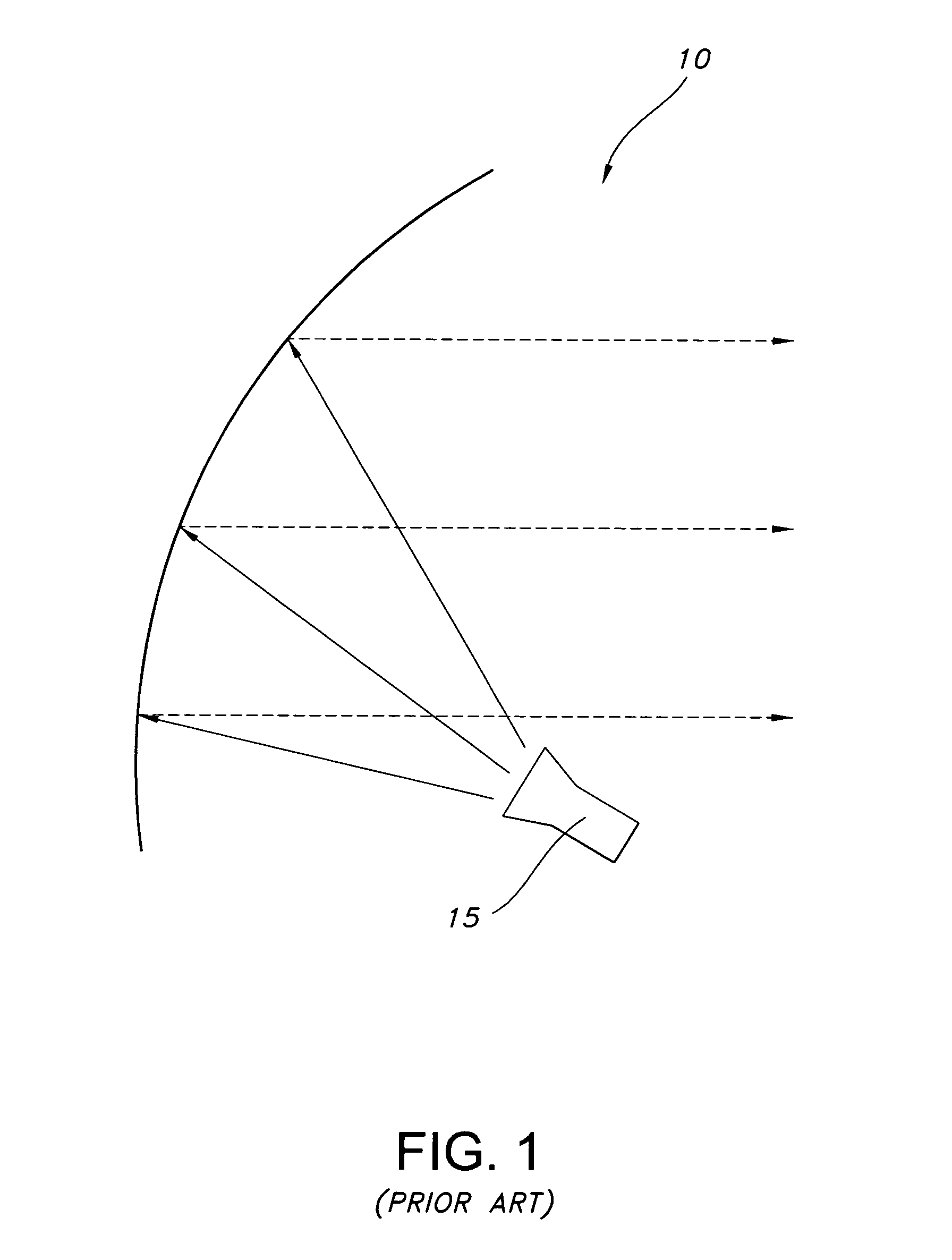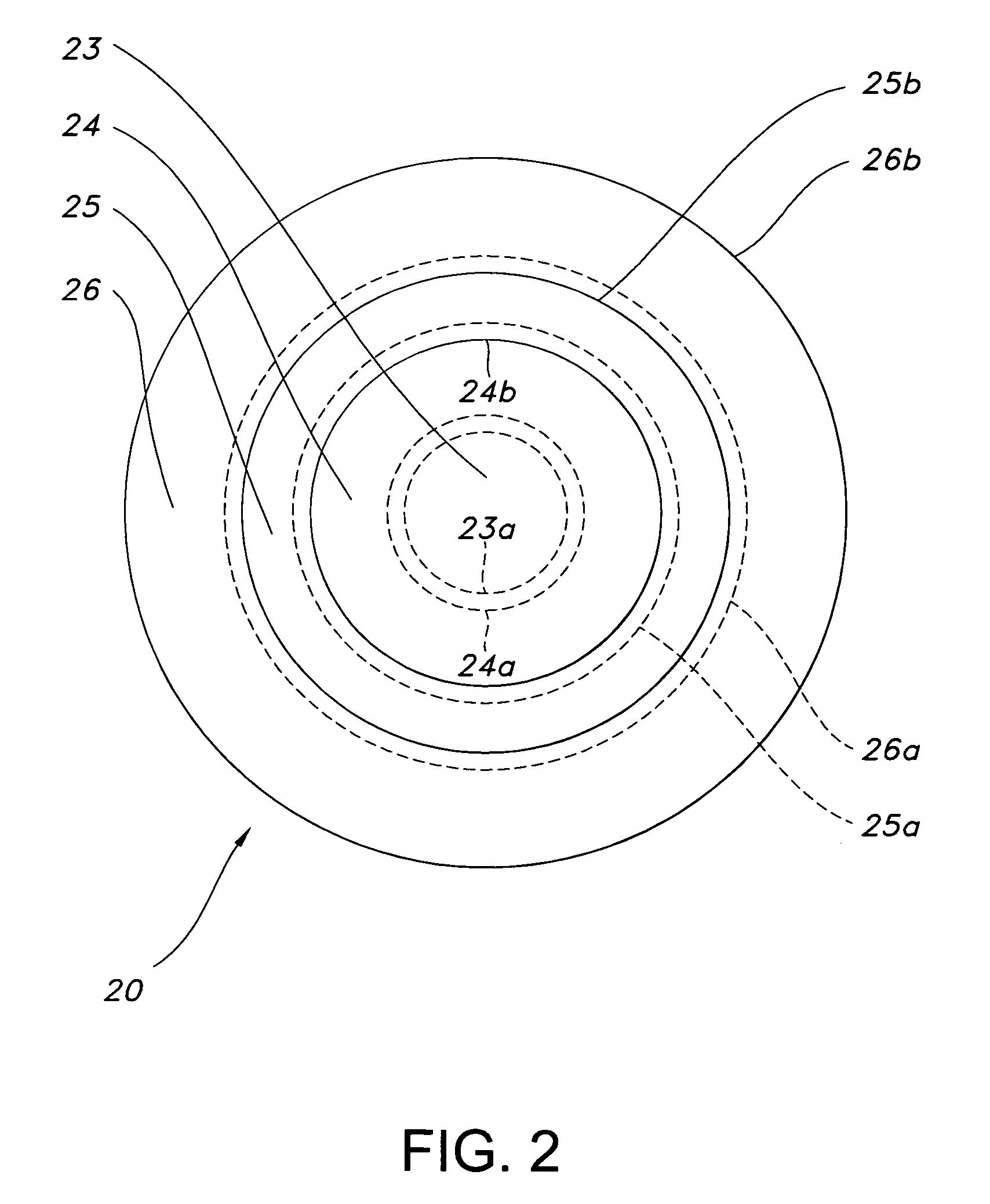Multiband waveguide reflector antenna feed
a reflector and waveguide technology, applied in waveguides, antennas, electrical equipment, etc., can solve the problems of affecting the operation of the reflector
- Summary
- Abstract
- Description
- Claims
- Application Information
AI Technical Summary
Benefits of technology
Problems solved by technology
Method used
Image
Examples
first embodiment
[0029]the present invention is an all-metallic coaxial waveguide structure 20 consisting of a highest frequency TE11 waveguide structure, which is the band 1 waveguide 23 of FIGS. 2 and 3 surrounded by concentric rings of TE11 coaxial waveguide sections for the remaining lower band frequencies, band 2 waveguide 24, band 3 waveguide 25, and band 4 waveguide 26. In the all-metallic coaxial waveguide 20, the EBG structures shown as dashed concentric rings 23a, 24a, 25a, and 26a in FIG. 2 are to be considered as solid rings for the purposes of the all-metallic feed embodiment discussion.
[0030]At the highest frequency, the band 1 center waveguide section 23 operates in the standard TE11 mode shown in FIG. 4. The cutoff frequency for the TE11 mode is commonly known in the art as:
[0031]fcTe11=2c1.640aEquation1
[0032]where,
[0033]c=the speed of light, and
[0034]a=the waveguide radius.
[0035]The radius of the band 1 waveguide center section 23 is typically selected with regard to minimum ins...
second embodiment
[0046]the present invention utilizes EBG or PMC surfaces, also known as hard surfaces, for waveguide surfaces conductors as shown by the dashed rings 23a, 24a, 25a, and 26a in FIG. 2 in exemplary fashion. The waveguide inner conductors 24a, 25a, and 26a and the waveguide outer conductors 23a, 24b, 25b, and 26b may be metallic PEC or PMC (EBG) as described below for possible waveguide mode options for the waveguides 23, 24, 25, and 26 of FIG. 2.[0047]I. A TEM mode for a circular waveguide section 23 with EBG surface outer conductor 23a as shown in FIG. 6.[0048]II. A TEM mode for coaxial waveguide sections 24, 25, and 26 if the outer conductors (24b, 25b, and 26b) and inner conductors (24a, 25a, and 26a) are EBG surfaces. The field structure is similar to FIG. 6.[0049]III. A circular waveguide-like TE11, mode for coaxial waveguide sections 24, 25, and 26 whose outer conductors (24b, 25b, and 26b) are PEC and whose inner conductors (24a, 25a, and 26a) are PMC (EBG). This field structur...
PUM
 Login to View More
Login to View More Abstract
Description
Claims
Application Information
 Login to View More
Login to View More - R&D
- Intellectual Property
- Life Sciences
- Materials
- Tech Scout
- Unparalleled Data Quality
- Higher Quality Content
- 60% Fewer Hallucinations
Browse by: Latest US Patents, China's latest patents, Technical Efficacy Thesaurus, Application Domain, Technology Topic, Popular Technical Reports.
© 2025 PatSnap. All rights reserved.Legal|Privacy policy|Modern Slavery Act Transparency Statement|Sitemap|About US| Contact US: help@patsnap.com



